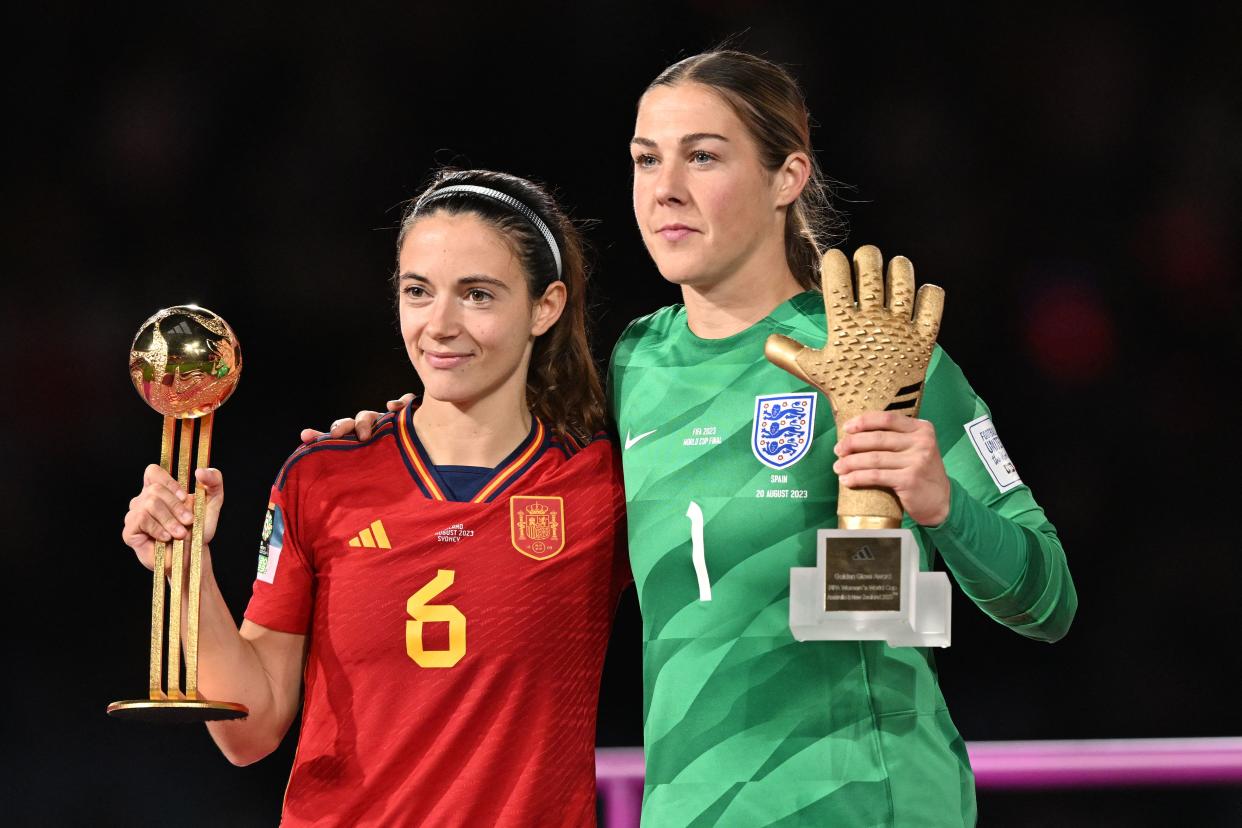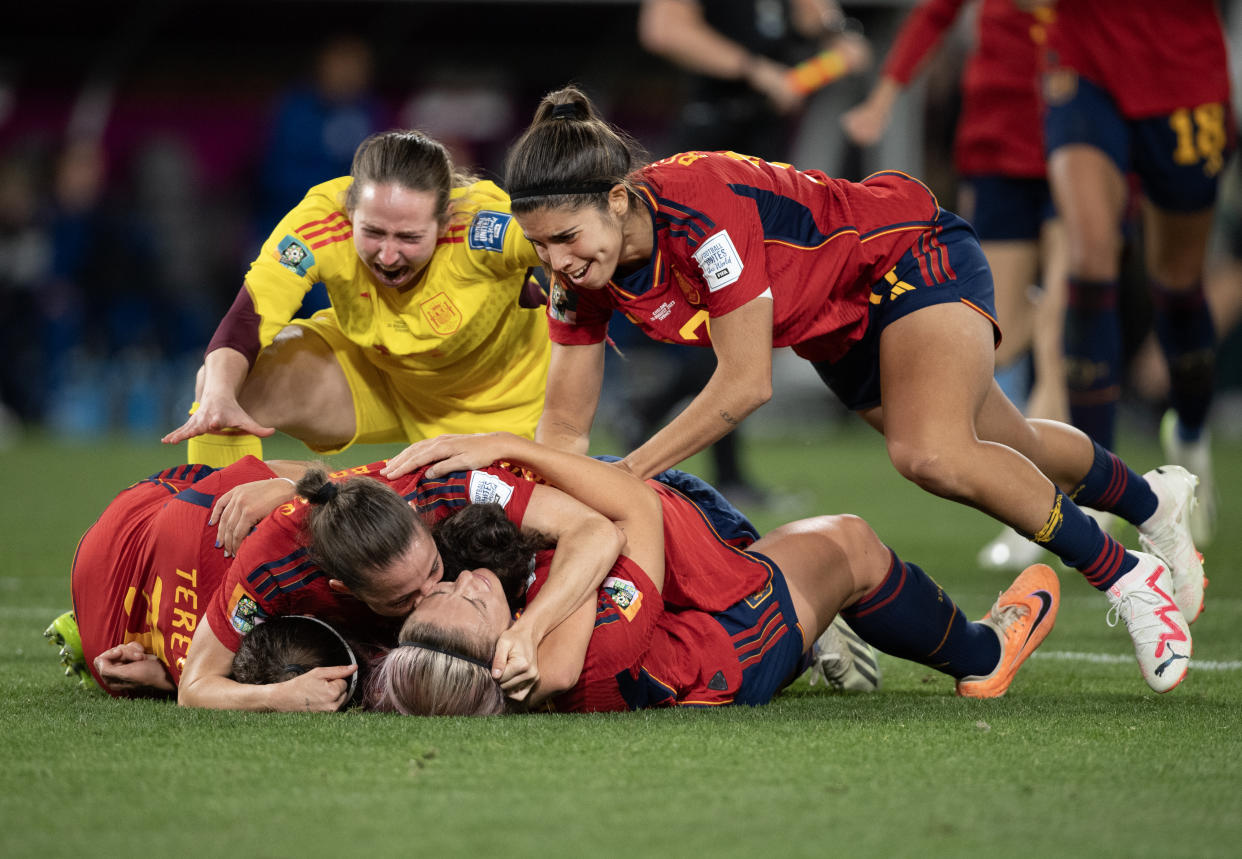2023 World Cup reveals a new women’s soccer world order, with USWNT no longer ruling

The warnings had been crescendoing, spreading through soccer circles, muffled only by American greatness.
The world had claimed it was catching up to the U.S. women’s national team. For years, from 2012 through 2020, the USWNT refuted every last declaration. But the warnings never relented. They cited an American player development system that had stagnated. They cited European equivalents that were accelerating.
“Spain and England are the gold standard right now, when it comes to creating a pathway for girls from cradle to pros,” Miriam Hickey, the former director of U.S. Soccer’s girls Development Academy, told Yahoo Sports in the spring of 2023.
So it was no surprise, to her and many others, that Spain and England met months later in the Women’s World Cup final.
It was no surprise that Spain, with the “world’s best youth development program,” as Hickey wrote, claimed its first title.
And it was no surprise that the 2023 tournament revealed a new women’s soccer world order.
The USWNT’s early exit was fluky. But its erstwhile air of invincibility was also deceptive. It rolled to repeat titles in 2015 and 2019, but all the while, its superiority was actually waning. It reached the 2019 final with a string of 2-1 wins buoyed by set pieces, penalty conversions and a penalty save. The totality of the four-year cycle told a different story. Throughout the 2007, 2011 and 2015 World Cup cycles, the U.S. beat top-five opponents by 1.1 goals per game. From 2015-19, as the Washington Post recently detailed, its average margin fell to 0.4.
And from 2019-2023, it kept falling, to 0.1 against those elite teams.
This new world order, with Europe largely hegemonic, had already assembled.
All it needed was World Cup confirmation — which came this summer and calcified Sunday.
The USWNT has been joined at the top table by Spain and England. Going forward, France and Germany should have seats too.
The Netherlands, Japan, Brazil and Sweden will float on the fringes of the ruling class. Australia and Canada might join them — and maybe, someday, Portugal and Italy, Colombia and Argentina, too. Nothing is ever fixed in international soccer; the hierarchy will be fluid. China could reemerge. Nigeria or Mexico could rise. A little investment can go a long way.
What’s certain, though, is that USWNT’s days in a tier of its own are over.

A stark contrast between youth development programs worldwide
This is the new world order because the new world leaders have finally awoken to women’s soccer. They are leveraging infrastructure that entrenched them atop the men’s game. They are welcoming girls, even encouraging them to participate. They are professionalizing their women’s leagues, incentivizing investment and mandating minimum standards. Their clubs — the Barcelonas and Chelseas, the PSGs and Bayern Munichs — are spending tiny fractions of their men’s soccer budgets to sign world-class players but also to build sustainable development structures.
And it isn’t just the superclubs.
Spain’s World Cup-winning goalscorer, 23-year-old Olga Carmona, was developed by Sevilla, whose first team was in Spain’s amateur second division when Carmona came of age.
La Roja’s breakout star at the base of midfield, 23-year-old Teresa Abelleira, was born and raised in Galicia, and played for tiny clubs before joining Deportivo de La Coruña.
“Spain, on the men’s side and [now] the women’s side, is well-known for its methodology and its work with the youth,” Spanish women’s soccer executive Pedro Malabia explained to The Equalizer in 2018. “Most of the clubs have a complete structure of teams in their academies. I’m talking about having 12 or 14 teams in their academy, starting from U-6 up to the first team.”
That same year, 2018, U.S. Soccer’s director of talent identification, Mirelle van Rijbroek, studied the Under-17 Women’s World Cup, and compared her players to those in Spain and elsewhere. She looked at strikers, for example. “And just look at their pathways,” van Rijbroek told Yahoo Sports five years later, this June. Canada had Jordyn Huitema, who was training daily at a specialized Vancouver soccer academy. Spain’s Claudia Pina was being schooled by Barcelona. The U.S. striker, meanwhile, was playing for her high school and local youth club.
“And compare those three now,” van Rijbroek said. “Just look at the experience, the level, the games that they've been playing.”
Huitema went to PSG at age 18, and now starts for Canada’s senior team.
Pina plays for Barcelona’s first team, and had been playing for Spain before the fight between Spanish players and their federation cost her a spot at the World Cup.
The U.S. forward, meanwhile, just finished up her senior year of college.
In Spain, and France, and throughout Western Europe and beyond, women’s soccer is exploding. Opportunities are multiplying. Professional leagues are now capable of sustaining development beyond a player’s teens. Carmona and Abelleira, for example, play for Real Madrid — which didn’t even have a women’s team five years ago.
In the U.S., meanwhile, the only thing exploding is youth soccer’s cost. Participation rates (among boys and girls) have actually fallen. The pipeline is fractured and malfunctioning, broken by unhinged capitalism. And while there is a growing acknowledgement of the problems, there is no simple solution in sight.

There are still some American advantages. More girls play soccer here than anywhere else. There are still some well-intentioned clubs with refined developmental philosophies. There is now a well-functioning coaching education system and a self-sufficient National Women’s Soccer League.
But Spain, England and others are only scratching their respective surfaces. They will only continue to accelerate at a speed the U.S. cannot currently match.
The long-term question, now, is not whether the U.S. will remain dominant; it’s whether the U.S. will even retain its place at the top table — or, on the contrary, whether it might fall behind.
USWNT no longer the gold standard
The USWNT, in the near term, can still contend for 2024 Olympic gold and a 2027 World Cup title. But in the aftermath of the worst World Cup in program history, there is a need to recalibrate expectations.
Vlatko Andonovski’s team took bronze at the Tokyo Olympics. He entered 2023 likely needing a run to the World Cup final, at least, to appease disgruntled fans and save his job. Instead, he's out as USWNT head coach after the team was bounced in the round of 16.
That, going forward, will be an unfairly high bar to ask a coach to clear.
The players and program themselves, of course, should enter every tournament eyeing a trophy. Dreams and goals won’t change. But Spain will do likewise; England will do likewise; Germany and France will do likewise; a half dozen others will arrive with hope. And each time, at each World Cup, most of them will fail.
The U.S. used to be above them; now it is one of them. There used to be a trailblazer and a chasing pack; now there is just a pack. And the USWNT, for the foreseeable future, will be part of it.
